|
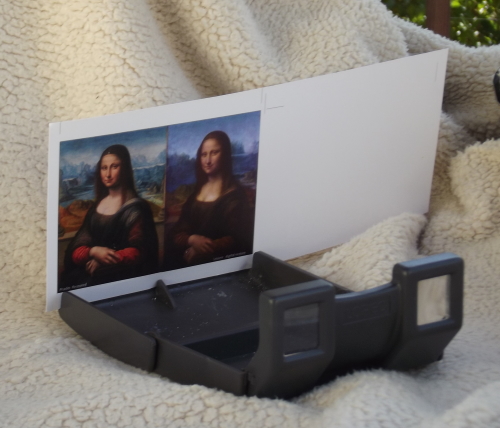
My 3d Ms Lisa Viewer...
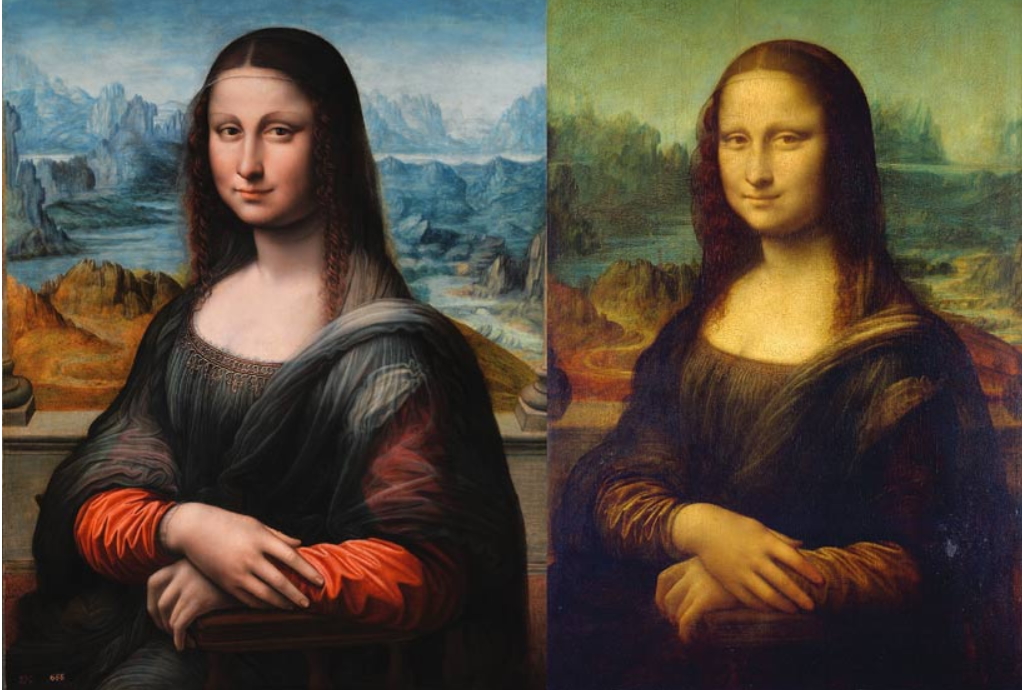
|
Was the Mona Lisa the first 3D painting?
This appeared in Artnetnews. in May 2014.
This idea was suggested in 2014 in the article Researchers reveal that mona lisa may be history's first 3-D image in DesignBoom in May 2014. This is a much more detailed article giving details on How leonardo did it Both paintings were done at the same time since they have the same corrections, but with different viewpints, Both paintings have the same dimensions Louvre (30 in × 21 in) and Prado (30.0 in × 22 in). The figure in the Louvre painting is a slighly smaller image. The paintings were painted side by with the Prodo painted closer to the model . But, when both paintins are overlaid you get a 3D image. This is more proof that Leonardo made copies of his own work. The Prado painting is in better shape than the Louvre's. The Prado was cleaned in 2012. The Louvre's painting hads never been restored. The green background colors in the Louvre's painting will turn blue when the varnish is removed and the colors restored. . Using Multi-scans and chemical signature of the paints Mr Cotte has restored the true colors to the Louvre's painting digitally in 2015. Also before the Prado painting was restored the background was totally black. When it was re4stored the Mona Lisa background poped out.
|
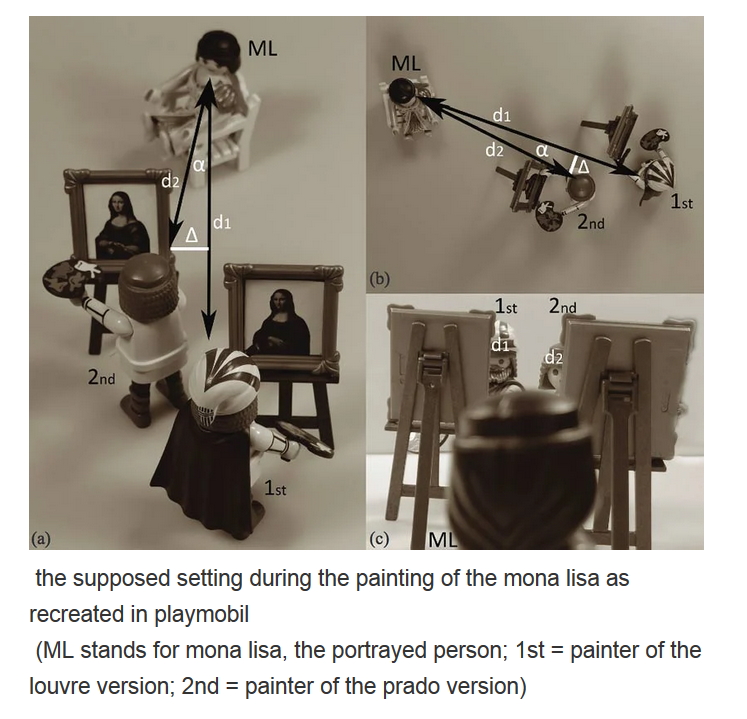
|
This is the setup that Leonardo used to make his 3D painting. As you can see it would have been impossible for the paintings to have been painted side by side. There would not have been enough room for both artists to view the subjects. That is why one portait was painted closer to the subject than the other. Hence, when painted closer the image is also bigger. They didn't have stero camera's around 1515 when these were painted for Giuliano de' Medici. Ms Lisa was 24 in 1506 when her portrait was made. She would have been 33 years old when these paintings were done. IMHO, these paintings look like a 30 something landy and not someone 24 years old.
|
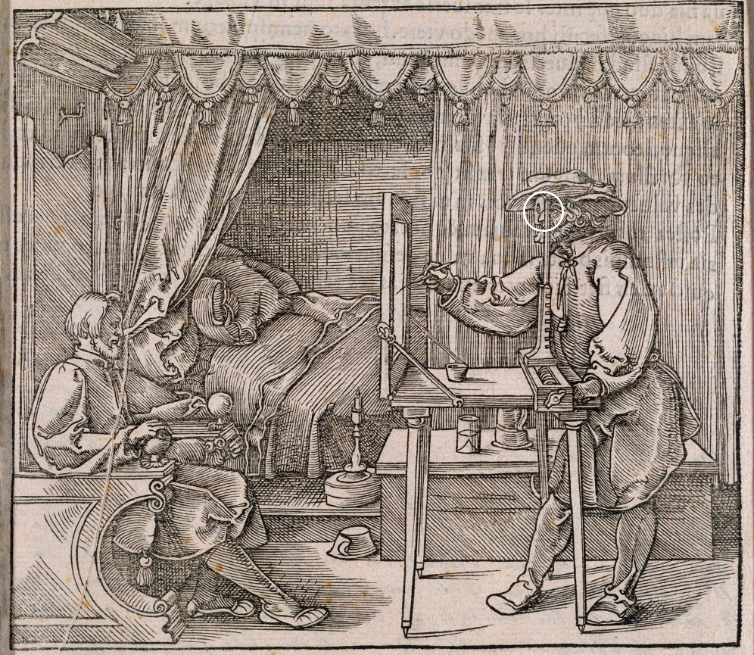
|
This image shows a artist using a wire grid and a sighting stick to draw a portrait. The sighting stick is used to make sure the artist is using the same view every time. In the imaghe, the sighting stick tip is close to the artist's eye. See the above circle. Leonardo and the other artist would have had the sighting stick attached to their easels. The sighting stick would have been on a hinge so the artist could pull it out and get a "fix" then put it back to get the "big" picture. Leonardo and the other painter probably had a sighting stick set up to make sure the would get the stero view right He didn't use it to draw but as a reference point to make sure he was on track.
|
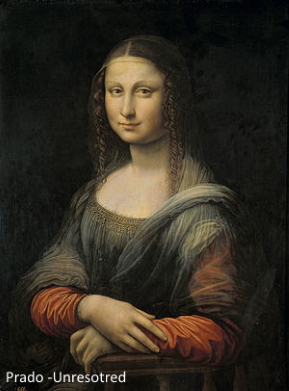
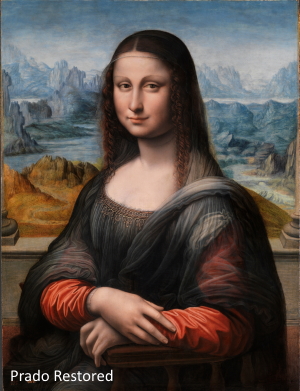
|
Before the Prado painting was
restored the background was totally black. When it was re4stored the Mona Lisa
background poped out. The new painting was very similar to the Louvre's.
When viewing the restored Prado to the unrestored Lourve. The colors do not match up and hence the 3d image is sketchy. However, when the Louvre is digiatally restored you get more or a 3D effect.3D viewing works best when the images are exact except for the shift. Leonardo probably made a special viewing glass, using mirrors, to view the paintings in 3D. Which would be nothing like what I using to view it in 3d. A short video on the steroccopic Mona Lisa. |
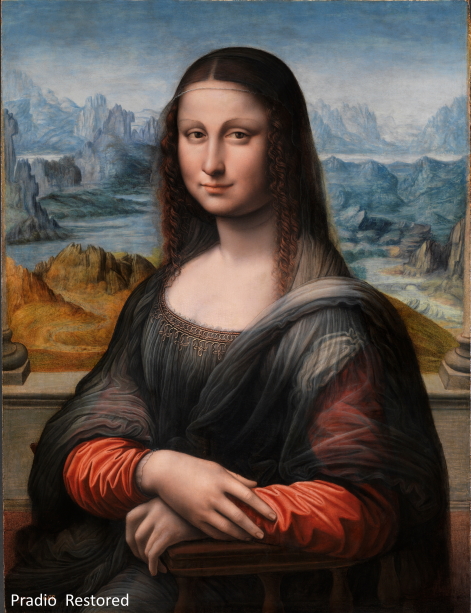
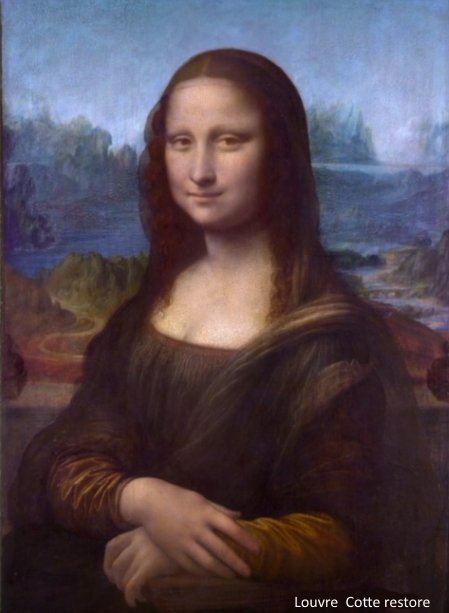

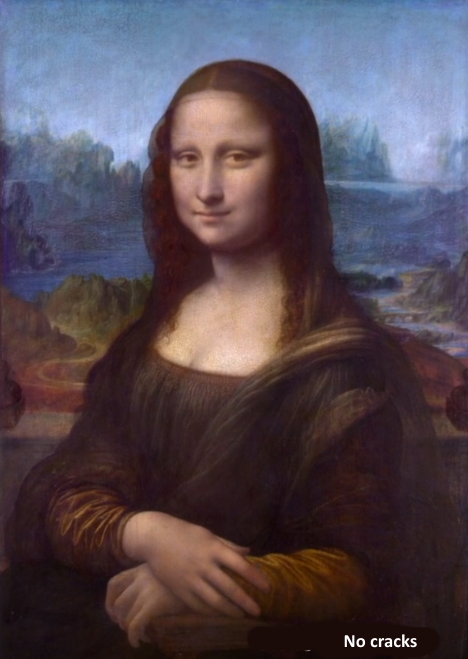
|
Cotte's restoration was done using a chemical anaylysis of paints and his 13 scan LAM system. The Louvre ML labeled "No cracks" was restored was done by a human using a photo editor. The restoration also took out all the cracks and micro that were in the painting. The original ML has tons of cracks in every square inch of the painting. IMHO, this cleared up Ms Lisa's flesh tones. The cracks makes her look like she had a bad suntan. What colors a computer or camera sees are very different from what a human sees. For example, a human can do a better job at depicting the red color in your dress than a photograph ever could. The painting is also badly faded and the paint has dried out and aged. This may be because Leonardo had severe arthris in his later years and probably cranked up the heat in his fireplace which didn't do any good to the paintings in his room. Watch the "The true colours of the Mona Lisa" video here To view the Mona lisa is Leonardo's day the viewer would have viewed the paintings side by side and using his "magic eye" would have combined the 2 paintings into one 3d image. Learn how to use your "magic eye" here.
|

My 3d Ms Lisa Viewer...
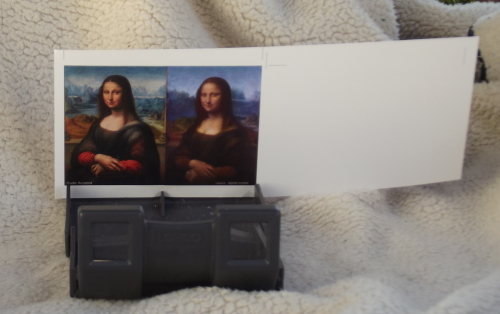
My 3D Ms Lisa Viewer
|
IMHO, The human restored image gives a better 3D iumage that the Cottee computer analysis. This is because the human restoration looks more like the Prado. To get a 3D images the two images should be resemlble each other. Also, all of the cracks in the Louvre's are taken out. A computer or a photograph can not match up the colors accurately. The blue on your dress is different from what a artist and a machines "see". The artist, IMHO, is more accurate. Also whatever the camera's "focus point" is ok, But, the rest of the photo is distored. Foregrounds, are notorosuly distorted in photos.
|
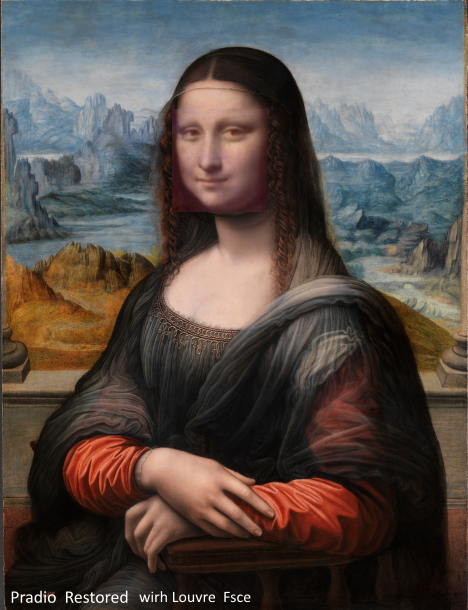
|
More Ms Lisa 3d videos by Leo Atreides: Part 1; Are the Mona Lisa(s) in 3D ?? Part 2:Did Leonardo Paint in 3D ? Part 3; Did Leonardo da Vinci create the Last Supper in 3D ?? See 3D with a Simple Piece of Paper
|
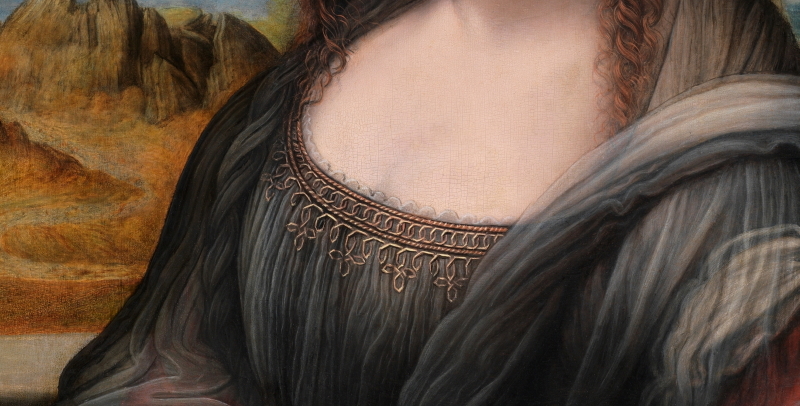
|
Note the detail work on the bodice of restored Prado Mona Lisa That's what the Louvre's Mona Lisa's bodice once looked like. and will if the Louvre ever restores its Lisa.
|